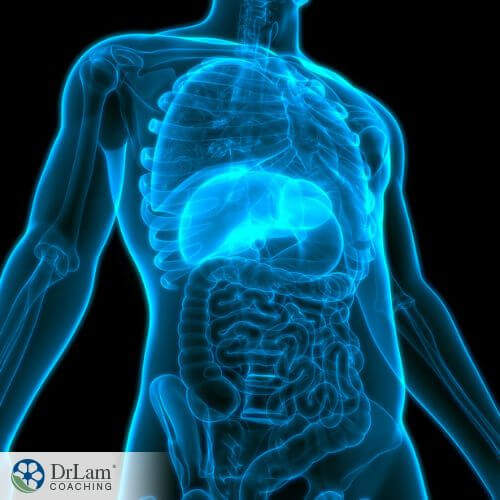 Your liver plays an essential role in bodily processes. It performs more than four hundred different functions and is involved with everything from food digestion to the removal of alcohol from the bloodstream. Unfortunately, it also processes drugs that can be harmful to your health. Suppose you struggle with drug or alcohol problems. In that case, you must learn about the liver detox phases to better understand what you can do to improve your health and be healthier in general.
Your liver plays an essential role in bodily processes. It performs more than four hundred different functions and is involved with everything from food digestion to the removal of alcohol from the bloodstream. Unfortunately, it also processes drugs that can be harmful to your health. Suppose you struggle with drug or alcohol problems. In that case, you must learn about the liver detox phases to better understand what you can do to improve your health and be healthier in general.
There are many reasons people have detox programs, including restoring balance to the body. Our livers hit when we drink alcohol regularly, eat unhealthy foods, or do not exercise enough. Incorporating detox phases into your lifestyle is essential for long-lasting good health to clear out toxins and keep them from building up again.
Detoxification is dependent on the liver. It breaks down toxic substances such as alcohol, medications, and other chemicals that enter our bodies. Toxins pose various threats: they may alter how our bodies function, cause damage to our cells and tissues or even lead to death. Cirrhosis and hepatitis are two diseases that result when this occurs, and if left untreated, they will result in death.
Fortunately, you can protect yourself from toxins by eating healthy, exercising regularly, drinking lots of water daily, and taking vitamin supplements as prescribed by your physician.
Phases are as follows:
Enzymes modify toxins in this phase to process the toxins in the subsequent phase. A family of cytochrome P450s, an oxidase enzyme, drives most detox reactions during this phase. These enzymes handle about 75% of all medicines people consume, and your liver has the most incredible abundance of them in your body out of any other organ.
Your small intestine also contains enzymes, brain cells, and many others that help detoxify. The phase 1 process of fat-soluble substance alteration through oxidation, reduction, and hydrolysis of chemical types is still an essential part of the process. Our liver cells can self-destruct if high levels of free radicals disrupt cellular function, detrimental to our health.
Besides these side effects, sometimes, the intermediate liver detoxification phase molecules are far worse than the original toxin. Some of these intermediates can bind to your DNA, and some may even attach themselves to proteins, triggering an unwanted allergic response in our body. To minimize this damage, you need to quickly move them away from Phase 1 into Phase 2 so they don't do any more harm.
One way that could help is by limiting exposure to toxins. Sources of toxins such as cigarette smoke or certain medications might significantly drive phase 1 too hard. It may cause problems, which will lead us back down a dangerous road where we suffer from severe reactions like chronic pain.
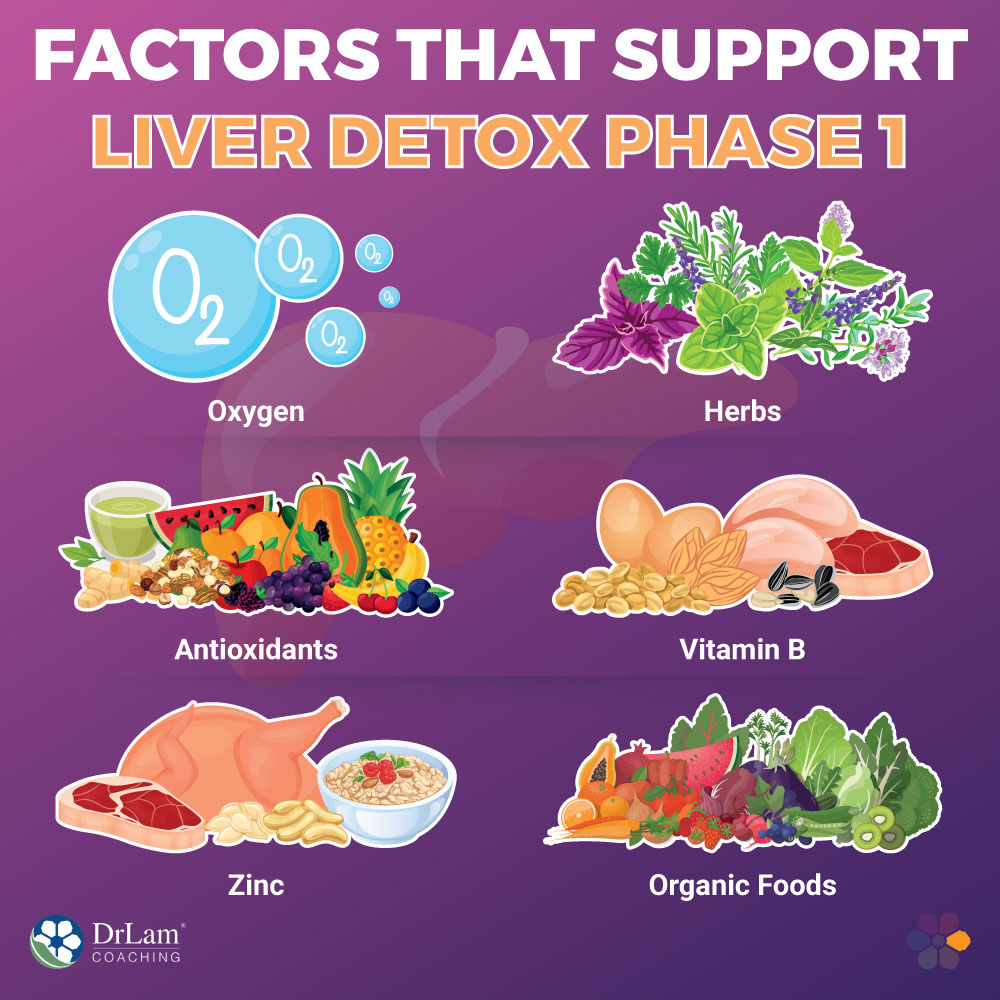
Eating a balanced diet and living healthy can aid Phase 1 liver detoxification. On the other side, unhealthy habits will hinder it, so healthy choices are essential. Here are some of the nutrients and other factors that contribute to Phase 1:
Oxygen is integral to the chemical reactions in your liver, so make sure you get plenty of fresh air and minimize indoor air pollutants by using natural cleaning products.
Remember that free radicals can damage the cells in your body. You should include many antioxidant-rich foods and herbs in your diets, such as fruits, berries, nuts, turmeric, and green tea.
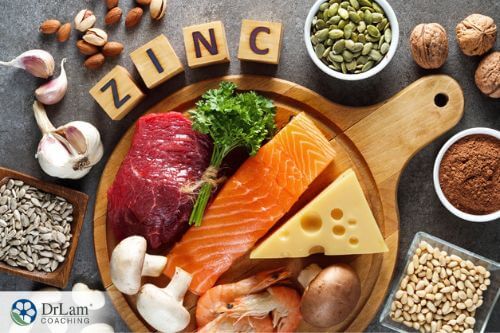 It is a mineral required for Phase 1 detoxification due to its role in cytochrome P450 activity. Good sources of zinc include meat, chicken (primarily red meat), pumpkin seeds, cashews, and oatmeal.
It is a mineral required for Phase 1 detoxification due to its role in cytochrome P450 activity. Good sources of zinc include meat, chicken (primarily red meat), pumpkin seeds, cashews, and oatmeal.
Several herbs could support the kidneys and liver, which can also help promote antioxidant defenses and reduce inflammation in the liver.
Particular phase 1 enzymes need help from B vitamins. These include riboflavin and niacin. If you avoid dairy products, a top source of riboflavin, seek out other sources like almonds, eggs, and quinoa. Meats, poultry, and sunflower seeds are rich in niacin.
Choosing to eat organic food reduces the chance of exposure to pesticides such as glyphosate. The weed killer impairs cytochrome P450 enzymes needed for detoxification. It also disrupts mitochondrial function, producing energy your cells need for detoxification. Organic foods can help you reduce your exposure while helping to regulate stress hormones like serotonin and cortisol, supporting healthy weight loss efforts, and promoting good moods regularly.
During liver detox phases, toxins and other chemicals are removed, which can be detrimental to your health. However, some substances pass through the liver without first going through Phase 1, which forges these substances.
In addition, Phase I serves as an initial treatment before going to Phase II-chemical processing, called conjugation reactions, where toxicants or drugs bond with molecules to make them less reactive and water-soluble. Hence, you can eliminate them more easily into bile or blood excretion. These complicated processes often involve many steps, depending on how complex they are. But whatever their needs may be, these reactions produce end products ready for elimination.
The primary Phase 2 detoxification pathways, and the toxins they can help to remove, are as follows:
Glutathione isn't just an antioxidant. Your body's Phase 2 detoxification process requires metabolizing and detoxifying, and this protein helps with that. For example, you can eliminate mercury through glutathione.
Associating with amino acids can help excrete toxic molecules. For example, glycine attaches itself to benzoate, a common food preservative.
This pathway helps detoxify harmful elements, such as those in your diet and car exhaust. It also clears histamine and caffeine from the body.
Glucuronidation is a Phase 2 pathway that helps clear about 10% of the most prescribed drugs. BPA, which is present in many plastic containers, can be detoxified by your bile and excreted.
The sulfonation pathway helps to detoxify acetaminophen, harmful substances, and other drugs by converting them into their sulfate forms. The uridine diphosphate pathway is responsible for removing excess uric acid from the body.
It's important to know that methylation is a genetic process that removes histamine, a substance your body produces and that is also present in some foods. If histamine builds up too much, it can lead to headaches, nausea, and other problems.
A healthy diet contributes to Phase 2 running smoothly and promotes liver health.
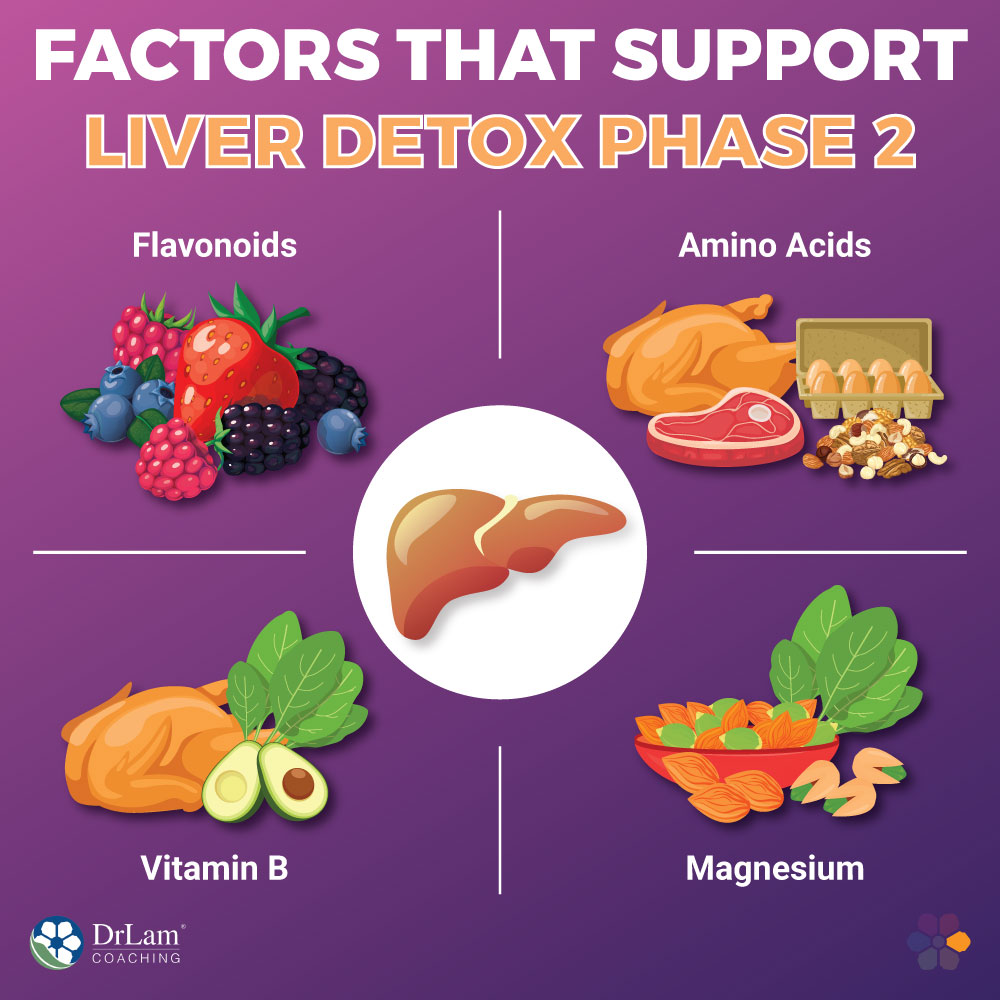
One of the ways you can make sure phase 2 is keeping up with the first phase is to ensure that your liver cells are not "overwhelmed" by the intermediate substances. They won't be damaged and can do their job well. A few nutrients and phytochemicals that support phase two include:
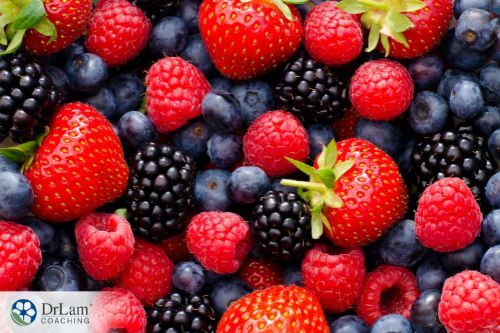 Ellagic acid is an important flavonoid found in berries. It promotes the activity of Phase 2 enzymes and decreases the action of the starting phase. This flavonoid ensures that it will keep damaging intermediate products under control.
Ellagic acid is an important flavonoid found in berries. It promotes the activity of Phase 2 enzymes and decreases the action of the starting phase. This flavonoid ensures that it will keep damaging intermediate products under control.
During Phase 2, enzymes attach some of the products formed in the first phase to amino acids, which enable you to excrete them. Such examples are glycine, taurine, cysteine, and methionine. Protein foods like meat, poultry, eggs, or nuts provide an excellent source of these amino acids.
B vitamins- including folate, B6, and B12- support methylation enzymes (other aspects of liver detox) and are present in various foods. Spinach and avocados are excellent sources of folate. Poultry products are excellent sources of Vitamin B12.
One way to increase glutathione production is by taking this mineral. It also supports the antioxidant protection and Phase 2 detoxification that glutathione provides. You can get magnesium through almonds, amaranth, pumpkin seeds, or sesame seeds- the top sources of magnesium in our diet.
After phases one and two, water-soluble toxins are shipped out of your liver cells. Still, it's not the third stage because all that is happening here is the transport of molecules; this carries water-soluble toxins out of your liver. It acts like garbage trucks in our bodies and shuttles the chemicals across membranes, eventually bringing them outside the cells.
Your cells’ mitochondria create adenosine triphosphate (ATP) to keep you energized. The liver either excretes water-soluble toxins into your bile or leaks them into your bloodstream after removing them:
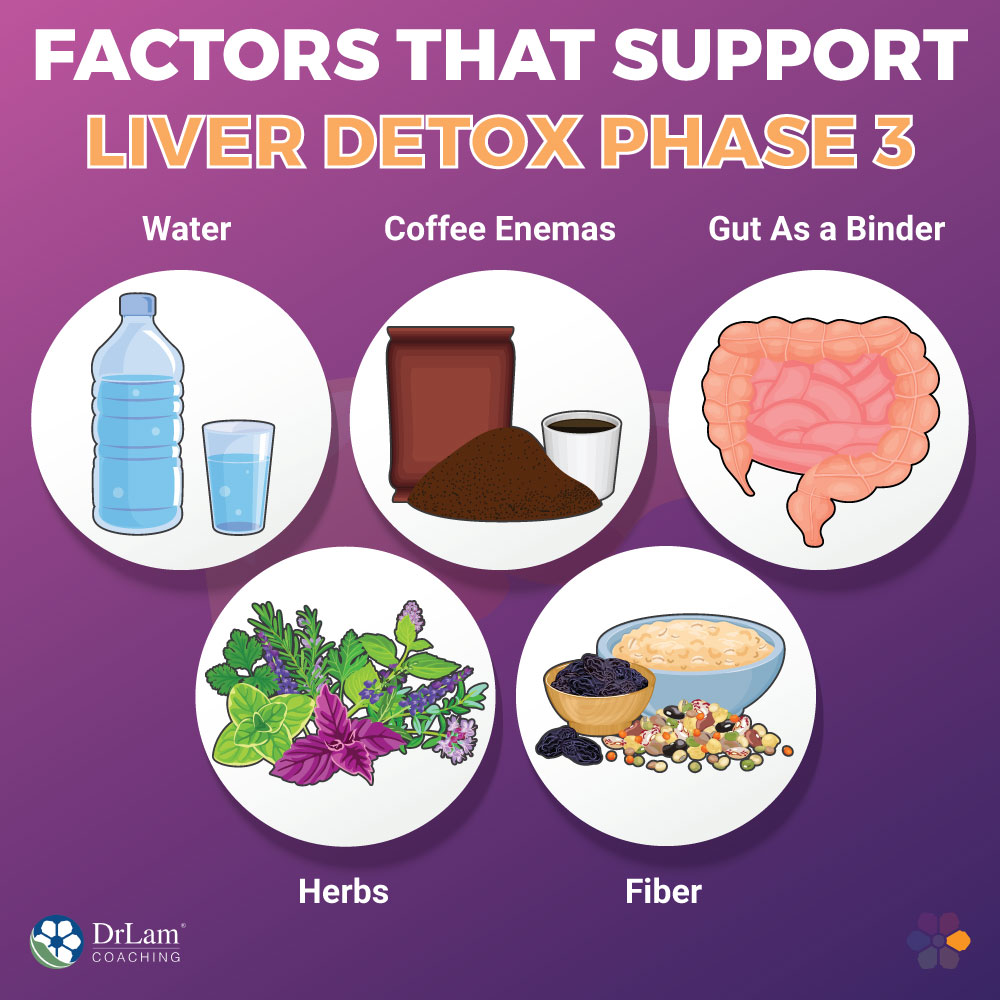
If you want your liver to cleanse and get rid of the end products of detoxification, it is possible through certain compounds or other strategies. Some substances that could help liver detox phase 3 are:
Drinking water is essential for eliminating toxins through your urine and stools. It also helps your kidneys work better, which reduces the risk of constipation.
Coffee enemas are an efficient way to support liver drainage. They make your bile ducts dilate, which helps release toxin-laden bile from your liver, moving it out of there.
Your gut can bind toxin-laden bile to help the toxins be excreted instead of recirculating. The majority of your bitterness is recycled or reused.
Herbs can help prevent constipation by stimulating your gut. Ideally, it would help if you went to the bathroom 2-3 times per day when detoxing. It helps with toxin elimination.
Some foods contain fiber, and some may assist in binding bile; this may help excrete toxins. Soluble fibers, like those found in oatmeal, legumes, and prunes, are also helpful for binding bile.
The milk thistle plant has been used for hundreds of years to treat liver disease and other conditions, including cancer and jaundice. It helps phases 1 and 2 and stimulates normal liver function by revitalizing the cells damaged by toxins.
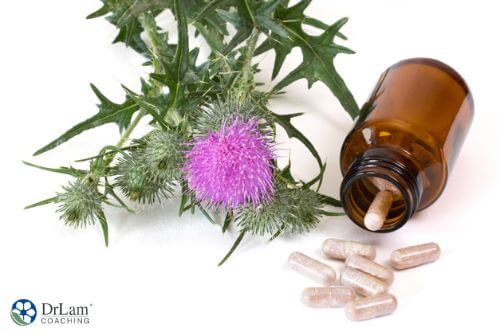 The milk thistle also helps detox your liver with alcohol use and supports digestion by increasing bile production.
The milk thistle also helps detox your liver with alcohol use and supports digestion by increasing bile production.
According to the National Center of Biotechnology Information, milk thistle enhances endogenous glutathione synthesis and restores depleted glutathione.
Glutathione is an antioxidant that guards against the harmful effects of free radicals and provides support for phase 2 detoxification. It helps remove toxins like mold, pesticides, and metals like mercury.
The adrenal glands are responsible for producing several hormones that help regulate stress and many other functions. Adrenal Fatigue Syndrome is a condition in which the adrenal glands cannot produce adequate levels of these hormones, leading to fatigue, dizziness, weight gain, and more. Liver detox phases are necessary to remove toxins from the body and protect it from further damage.
The liver is a large organ that performs many functions in the body. The removal of harmful substances from the body is one of the detoxification processes. Liver function is impaired by poor nutrition or other factors, resulting in toxins building up in your body and causing the symptoms described above. It leaves the body vulnerable to infection and disease. In addition, it can lead to hormonal imbalances that exacerbate the symptoms of adrenal fatigue syndrome.
Stress is part of the body's natural defense system. The NeuroEndoMetabolic (NEM) Stress Response comprises six circuits that work together to combat stress. Whenever you encounter a stressful situation, your body tries to maintain or regain homeostasis. The Detoxification Circuit is one of these circuits.
A detoxification circuit is a group of organs that detoxifies harmful substances. The liver is one of these organs known for its detoxification functions. The detoxification circuit in the human body includes several organs, one of which is the liver. The liver is the largest organ in the human body, and it activates over 500 functions, including producing bile and storing vitamins. The detoxification circuit in your body will function more effectively if you eliminate toxins, and the liver will assist you in doing this.
Liver detox phases work with the kidneys, lungs, skin, and intestines to remove harmful substances from the bloodstream. You can improve your overall health by eliminating toxins through urination, bowel movements, skin exfoliation, and breathing exercises (such as yoga or meditation). It allows you to have a healthy functioning body that can fight off disease and keep you feeling good for years to come.
The body is viewed as a complex network of anatomical structures and metabolic processes when dealing with AFS. Eating liver-friendly foods, drinking water, getting exercise, and taking supplements can help your adrenals and liver cooperate to restore health. If you are very sensitive to taking supplements, can't tolerate many foods or chemicals, then you might want to get your liver and detox pathways checked.
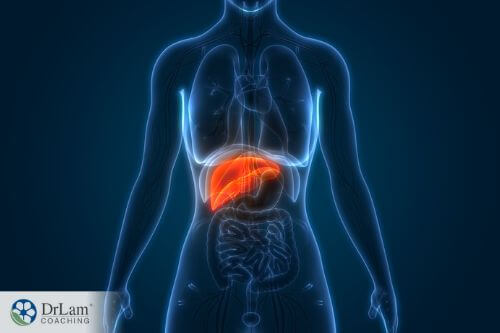 The liver performs several functions to maintain the body's internal environment, most of which are involved with filtering blood. It is an essential component of the detoxification process, which removes toxins from the blood as it passes through the liver. Liver detox phases include various enzymatic processes that break down and neutralize toxins as they circulate through the bloodstream. You may assist your body's natural processes and restore proper functioning by detoxifying your liver. Proper detoxification may help your body's physiological processes return to normal functioning.
The liver performs several functions to maintain the body's internal environment, most of which are involved with filtering blood. It is an essential component of the detoxification process, which removes toxins from the blood as it passes through the liver. Liver detox phases include various enzymatic processes that break down and neutralize toxins as they circulate through the bloodstream. You may assist your body's natural processes and restore proper functioning by detoxifying your liver. Proper detoxification may help your body's physiological processes return to normal functioning.
Please do your best to take a course of action with the guidance of your healthcare practitioner, who will assess the supplements' benefits for you and recommend an appropriate dosage.
The team at Dr. Lam Coaching can help if you are looking for more information on adrenal fatigue syndrome and the NeuroEndoMetabolic stress response and detoxification circuit. We offer a free** no-obligation phone consultation which will discuss your symptoms privately over the phone at +1 (626) 571-1234 or through our Ask The Doctor system.
Liver detox phases are the process by which the liver breaks down and removes toxins from the body. It is essential because it plays a crucial role in the healthy functioning of other organs and organ systems, including the kidneys, lungs, digestive system, and immune system.
